QuestionHi- I recently took my mare barefoot about 6 weeks ago and she's been doing well. Other than a little bruising from playing on rocks in the field! But my issue is, I noticed her frog in her right front a few eeks ago started to develop a hole and peel away in the part closest to her heel. It's a horizontal hole. I poked a hoof pick in it, and some grey smelly goo game out on the hoof pick. I assumed it was thrush, so treated with thrush buster. Her frog was hard other than that.Just seemed to have this hole. So next few weeks, gooey stuff didn't get any worse, but the hole got bigger and bigger and now I can almost pull off her whole frog. It's just attatched by a few pieces on the sides and when I lift it up I cans ee deep into the hoof part of the frog. So I soaked the foot with Clean Trax about 2 days ago as I'm thinking it's a fungal infection. I had a horse with this before, but he had it up the back of his heel, not in the frog. So never had the frog peel off like this. So, now I'm treating it with 50/50 mix of athlete's foot cream and antibiotic ointment. Her foot is very sore as she pulls it away every time I go near it and she's off at the trot. So my question is, since the hole in her frog looks pretty deep, should I cut off the part of the frog that has peeled away or leave it on to give some protection? I have the goo in it, then put a gauze pad over it, and put an easy boot on to give her some support and keep it clean since I'm dealing with the bottom of her foot, not up the back of the heel. I just don't want to cut it off and make it more sore by exposing the tender frog parts underneath, but I keep reading that you should cut off any dead tissue. If I do that, she'll have no frog at all. It's not just a few skin flaps. Should I keep it covered and booted to protect it, or let it get exposed to the air? I just want to do whatever will help it heal faster! Thanks so much for your help!
AnswerGood Morning!
Sounds like you might have had an abscess workin' around and maybe fungus or thrush or both.
What I would do would be to leave the frog until sufficient amount has grown back that you can remove the necrotic frog without causing discomfort to the horse. I'd continue as you are with keeping it protected. I would also treat homeopathically for abscess and for rapid new growth.
To help resolve abscesses the remedy "Silicea" is a very effective aid. You can get homeopathic remedies at a natural food store or online. You want to get "Silicea 200c" Along with that I'd also give the remedy "Calendula 30c" If you're not familiar with administering homeopathics and you decide to go ahead with this, please feel free to contact me and I will help you with the details. Homeopathy is a dynamic energy based treatment that affects the individual as a whole. It is safe to use and is reputed to be the only 'medicine' that can 'cure' (rather than merely treat and suppress the 'symptoms' of a dis-ease.)
Something else *I* would address is the diet. Is your horse getting any FRESH foods? Not processed concentrated pelleted feed or sweet feed but fresh veggies, fruits, nuts, seeds? Grass? The nutrients, minerals, proteins and enzymes in the varied fresh, live foods are ~essential~ to the health of any critter but more so for the horse. They are created to subsist and thrive on fresh, raw forages. Without enough fresh forages with varied nutrients, enzymes, minerals and proteins, any living herbivore will fail in health regardless of the amts. of supplements, concentrated this or that (specialty feeds), hay, etc. that we can give. Injuries will take much longer to heal or not heal at all. The body's systems cannot function at peak function without the necessary, essential contributors of live foods. So, IMO, and in my experience, feeding fresh 'salads' every day to the horse will not only expedite any healing of injuries, it also boosts the immune system tremendously and help the horse to perform at peak capabilities as a whole. You can read more, if you're intersted here: www.thepenzancehorse.com under the category of ARTICLES. You'll find a couple of interest there.
The horse and hooves are amazing things - they are well suited to not only surviving but thriving under rather adverse conditions. The hooves, being the source of survival for the horse, have remarkable capabilities of quickly restoring themselves to functional health, 'given the correct parameters'. So, keep the hoof protected and do what you can to maximize the overall health of the horse so his body can heal itself.
Hope this is helpful to you. Let me know how it works out - keep me posted.
:) -- Gwen

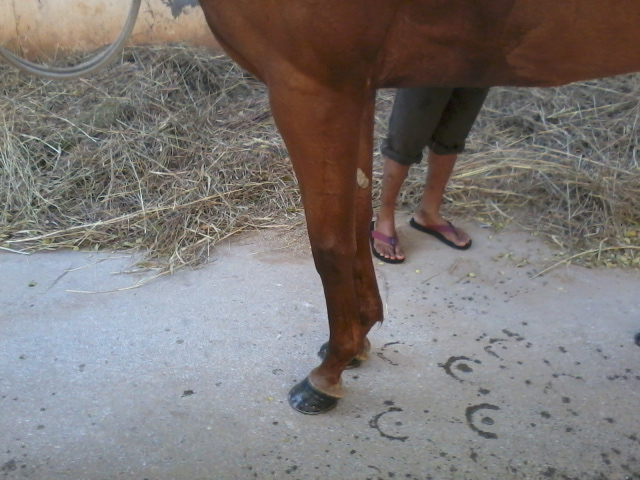 change of pastern angle unnecessarily
Question
horse
hello sir. i believe that this h
change of pastern angle unnecessarily
Question
horse
hello sir. i believe that this h
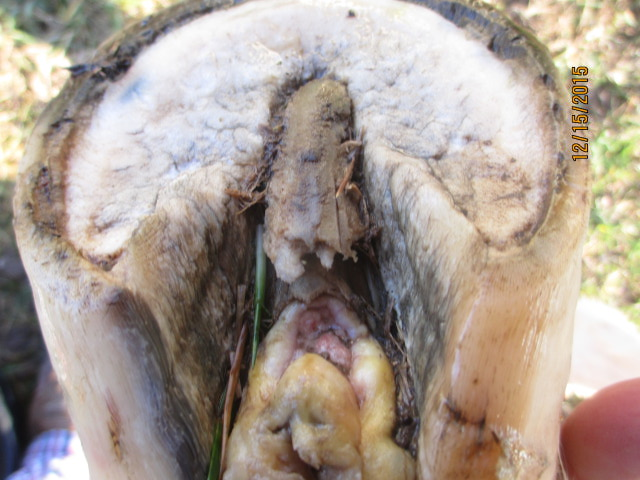 contracted hoof frog is almost gone
Question
frog
I have a paint gelding. I bought h
contracted hoof frog is almost gone
Question
frog
I have a paint gelding. I bought h
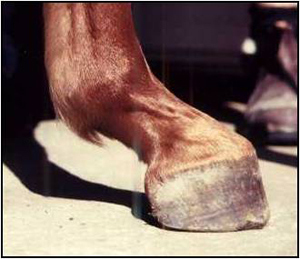 club footed horse - advisable to buy
Question
club foot
Hi sir. We have an offer at t
club footed horse - advisable to buy
Question
club foot
Hi sir. We have an offer at t
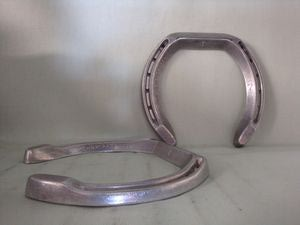 what type of shoe
Question
what type of shoe
hello sir, what type
what type of shoe
Question
what type of shoe
hello sir, what type
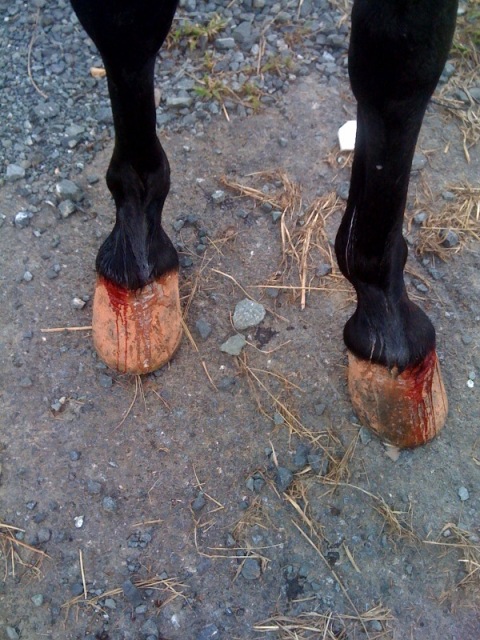 bleeding hooves
Question
bleeding hooves
hi Joepaul! I have attached a
bleeding hooves
Question
bleeding hooves
hi Joepaul! I have attached a